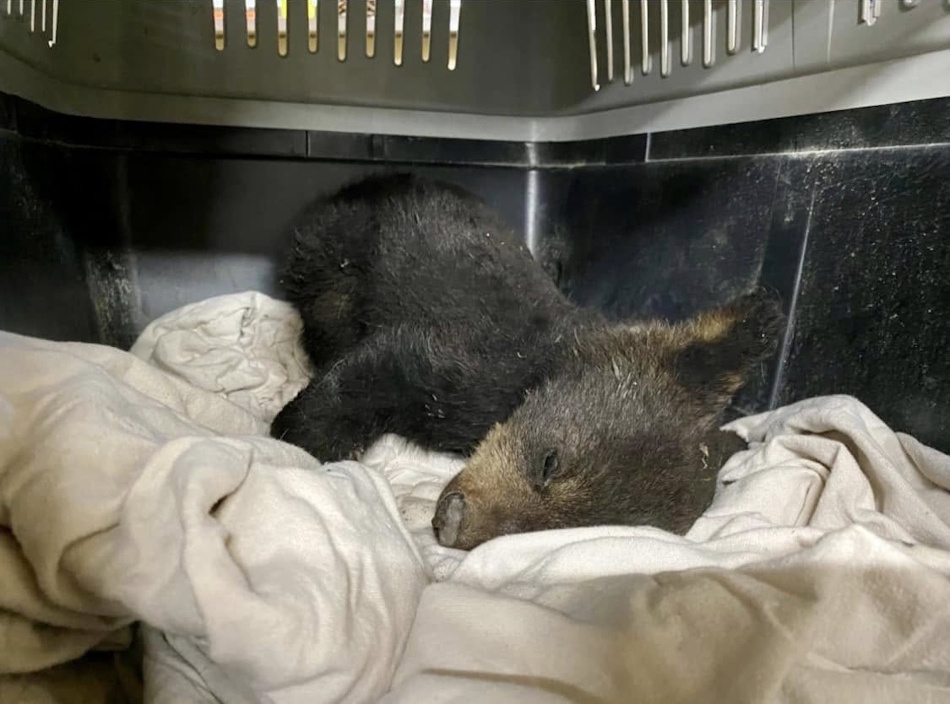A recent uptick in black bear sightings along Highway 26 near St. François Xavier has raised questions about why the animals are venturing closer to roads and residential areas. According to wildlife experts, the answer likely lies in the early start to wildfire season across Manitoba.
This spring has seen frequent and intense wildfires, which disrupt natural ecosystems and force bears out of their usual habitats in search of food, safety, and territory.
Fires send bears into unfamiliar territory
Judy Stearns, owner of Black Bear Rescue Manitoba near Stonewall, says wildfires and the food shortages that follow are behind the spike in sightings.
“We typically don’t see too many problems with the weather impacting bears,” Stearns explains. “But if a drought or fires are affecting the natural food sources for bears, then they can start migrating to different areas in search of food. That’s when we would see them near communities or garbage dumps.”

Younger bears are vulnerable
Early summer is a critical time for younger bears who are often recently separated from their mothers. Learning to survive on their own, they rely heavily on food-rich environments, and when natural options are destroyed by fire, they’re more likely to explore riskier terrain.
“It reduces their food resources for bears. It can destroy the vegetation and the insects that bears need to live on,” she says. “That could bring them nearer to humans or communities. It could put them into other bears’ territory where they have more competition for food, or you might get big male bears defending their territory, and they can kill other bears.”
Black Bear Rescue Manitoba, based near Stonewall, has seen firsthand how wildfires and related hazards can leave cubs abandoned.
“There can be direct mortality when animals perish, otherwise, they can be injured by burns and smoke inhalation. Other animals can prey on them as well, so there are a lot of ways that fires can impact bears,” she continues.
Related stories:
- Tragic loss of rescued cub sparks urgent call for fire season awareness
- Dry summer forecast raises wildfire risk
- Bob Barker sponsored Black Bear Rehab centre in Stonewall
A rescue effort built from scratch
The idea for the rescue began in 2012 when Stearns tried to save an orphaned black bear cub. It was then she learned that provincial regulations required orphaned or injured bears to be rehabilitated within Manitoba, even though no such facility existed at the time. Stearns and her husband, Roger, opened their centre six years later, becoming the province’s first and only bear rehabilitation facility.
Since then, they’ve taken in more than 100 cubs, nursing them back to health before releasing them into the wild.
“We’ve had as few as four bears, although that was our first year when a lot of people didn’t know about us yet. We’ve had as many as 32 cubs here at one time. I always say we're never going to turn a cub away for lack of space. We have a lot of space, and my husband adds enclosures as needed, which we've done a couple of times now. The inn is always open,” she says.
Stearns says while release day is always the goal, it doesn’t come without emotion.
“It’s always bittersweet because I worry about them after they’re gone. It’s a bit of a rough life for wildlife and bears, but it’s a happy moment because we’ve achieved our goal and the bear is going back where it should have been in the first place.”

Prevention could save wildlife
As wildfire risks continue through the summer, Stearns reminds the public that every effort to prevent fires can have lasting impacts, not only for communities, but for the animals who live near them.
“People are pretty educated about preventing forest fires, but try to remember how devastating they can become. We all have to do our best, especially when there are burn bans in place.”
With fewer fires, fewer cubs will be orphaned or displaced, and more bears can stay in the wild where they belong.
Black Bear Rescue Manitoba operates entirely on public donations, a challenge that becomes even more urgent during wildfire season, when the number of displaced cubs often increases. Visit their website for more information.
“We rely entirely on public donations to keep our doors open. If anyone is interested in helping, they can find more information on our website.”
Sign up to get the latest local news headlines delivered directly to your inbox every afternoon.
Send your news tips, story ideas, pictures, and videos to news@portageonline.com.
PortageOnline encourages you to get your news directly from your trusted source by bookmarking this page and downloading the PortageOnline app.
